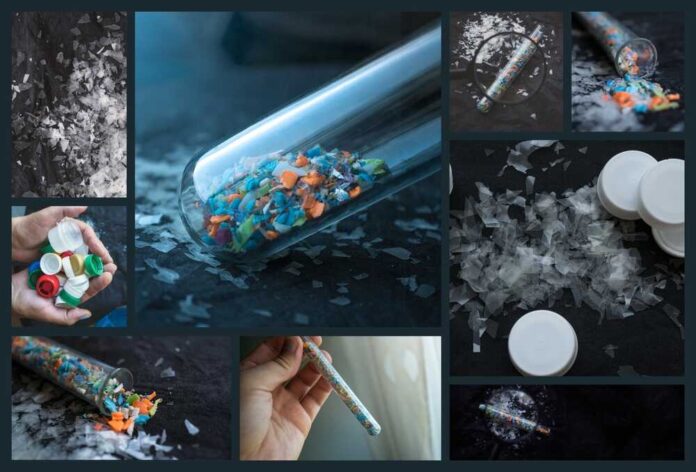
Nanoplastics are so tiny—1,000th the diameter of a human hair—that they can enter the circulation via the gastrointestinal or respiratory tracts, where they might release synthetic chemicals that could damage cells throughout the body.
The ingestion of micro- and nanoplastic particles (MNPs) is one of the most pervasive routes of exposure to one of our day’s most pressing environmental issues. Now, for the first time, scientists at MedUni Vienna have figured out how these microscopic particles get beyond the brain’s protective blood-brain barrier. Based on the newly found mechanism, additional studies may be conducted to safeguard both individuals and the environment.
Two recent research detailed the pathways that microscopic microplastics may take to human organs and even mouse brains.
One study fed healthy mice microplastics for four to eight weeks; the results were reported in Environmental Health Perspectives on April 10. The scientists later discovered that the mice’s organs were contaminated.
Essential for preventing harmful substances or infections from entering the brain, the blood-brain barrier is a cellular barrier. Numerous scientific investigations have shown that MNPs may also penetrate the intestinal barrier, the body’s equivalent of the skin of a building. The effects of plastic particles on human health are the subject of intense investigation. Previously, research has connected MNPs in the GI tract to cancer growth, local immunological reactivity, and inflammation.
On April 5, researchers from the Journal of Hazardous Materials conducted experiments on mice and people. Gallstones, which are solidified bits of excess bile in the gallbladder, contain far greater levels of hazardous chemicals in people less than 50 years old, according to the research. Mice in the study developed gallstones more quickly after consuming microplastics.
Because most Americans have been exposed to microplastics their whole lives, the implications for people are being explored, creating significant concern. Dr. Janette Nesheiwat said that microplastics “are everywhere.”
According to Nesheiwat, microplastics have different detrimental impacts on different organs. Her advice for reducing one’s consumption of microplastics is to choose glassware over plastic and to select meals that are less likely to contain microplastics.
Dr. Marc Siegel, a medical expert who contributes to Fox News, told Fox News Digital that the effects of microplastics on people have yet to be recognized.














